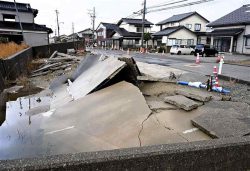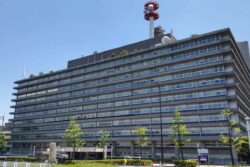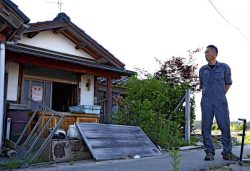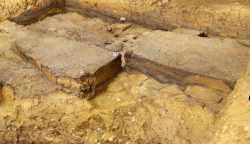Quake-Hit Districts on Noto Peninsula Consider Relocating; Residents Seek Areas Less Likely to Be Cut off Amid Disasters
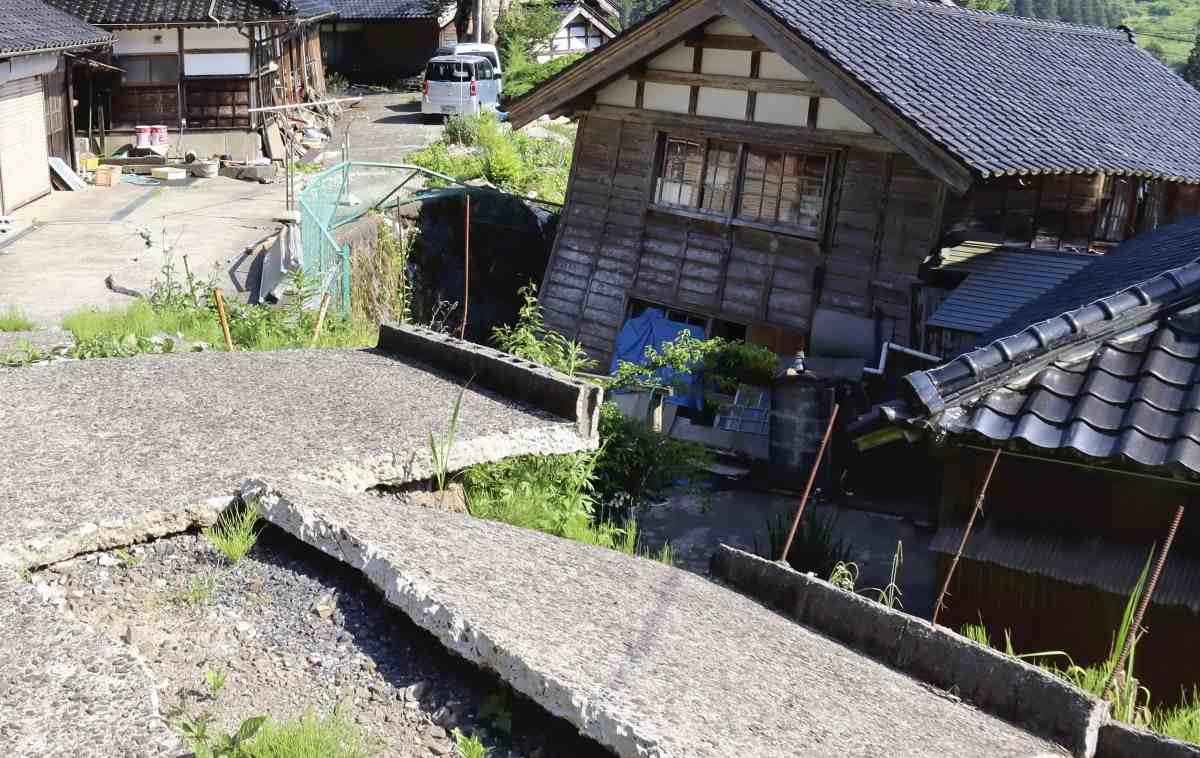
A damaged road is seen in the Besshodani-machi district of Wajima, Ishikawa Prefecture on June 14.
17:33 JST, June 30, 2024
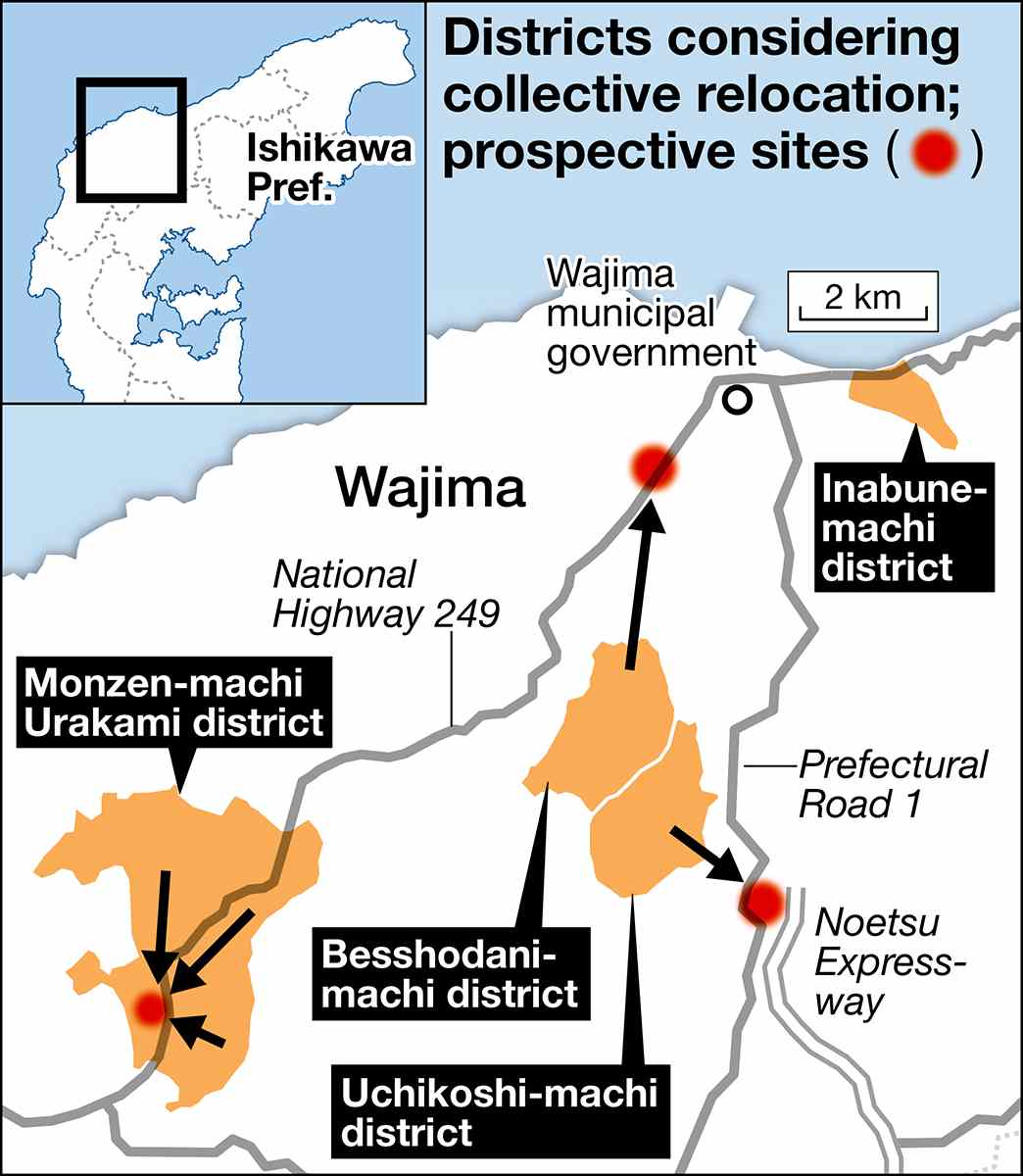
WAJIMA, Ishikawa — At least four districts of Wajima, Ishikawa Prefecture, a city hard hit by the Noto Peninsula Earthquake, are considering the collective relocation of their residents, it has been learned.
These are the first such plans to be unveiled in areas affected by the Jan. 1 earthquake. All the four districts, which contain a total of 257 households, are aging and depopulated, and most of them are located in mountainous areas.
Severed roads temporarily isolated these districts after the quake. Many residents are hoping to relocate to places with a lower risk of isolation in case of natural disasters, and the Wajima municipal government plans to help them realize their plans. Other locations may follow suit now that these relocation plans have come to light.
Residents in up to 24 districts of four municipalities in the Okunoto region of Ishikawa Prefecture were isolated after the quake. Of these districts, 14 were in Wajima.
The four districts that are planning to relocate include the Monzen-machi Urakami district with 266 residents in 143 households; the Besshodani-machi district with 77 residents in 41 households; and the Uchikoshi-machi district with 22 residents in 11 households. These three are located in mountainous areas.
The remaining district is Inabune-machi, which is situated along the sea with 119 residents in 62 households.
In Monzen-machi Urakami, where 26 communities are scattered across the district, residents hope to collectively relocate to an area around the Urakami community center near the national highway. Residents in Besshodani-machi are considering moving to an area along the national highway about four kilometers north of the district, while those in Uchikoshi-machi are planning to go to an area along a prefectural road about two kilometers southeast of the district.
All the relocation sites are relatively close to their current residences and have better access to the city center.
“Our district has many elderly people. There was a landslide recently and it would dangerous if we’re cut off again,” said Hitoshi Yachi, 66, the head of the Uchikoshi-machi district.
Each district will hold discussions among its residents to decide whether everyone will relocate or only some of them. In Monzen-machi Urakami and Besshodani-machi, nearly half of the residents hope to relocate to new sites.
The Wajima municipal government has a “compact city” initiative to consolidate certain administrative and other functions, and the collective relocation plans are in line with that initiative. “We want to support these districts so that their communities will not be disbanded,” Wajima Mayor Shigeru Sakaguchi told The Yomiuri Shimbun on Wednesday.
In Noto, a town in the Okunoto region that was affected by tsunami, the head of the Shiromaru district and other residents were to discuss collective relocation with town officials on Wednesday. Shiromaru has 192 residents in 95 households.
In the cities of Suzu and Anamizu, there are reportedly no concrete plans for collective relocation.
Among the existing frameworks for collectively relocating residents is the disaster mitigation collective relocation promotion project, under which the central government subsidizes three-fourths of the land acquisition and other related costs. According to the Land, Infrastructure, Transport and Tourism Ministry, about 12,500 households collectively relocated to new sites following the 2011 Great East Japan Earthquake.
Similar relocations took place in Nagaoka and Ojiya, both in Niigata Prefecture, after the 2004 Niigata Prefecture Chuetsu Earthquake.
"Society" POPULAR ARTICLE
-

M4.9 Earthquake Hits Tokyo, Neighboring Prefectures
-

M7.5 Earthquake Hits Northern Japan; Tsunami Waves Observed in Hokkaido, Aomori and Iwate Prefectures
-

Tsukiji Market Urges Tourists to Avoid Visiting in Year-End
-

Israeli Tourists Refused Accommodation at Hotel in Japan’s Nagano Pref., Prompting Protest by Israeli Embassy and Probe by Prefecture
-
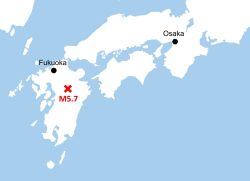
M5.7 Earthquake Hits Japan’s Kumamoto Pref., Measuring Upper 5 Intensity, No Tsunami Expected
JN ACCESS RANKING
-

Keidanren Chairman Yoshinobu Tsutsui Visits Kashiwazaki-Kariwa Nuclear Power Plant; Inspects New Emergency Safety System
-

Imports of Rare Earths from China Facing Delays, May Be Caused by Deterioration of Japan-China Relations
-

University of Tokyo Professor Discusses Japanese Economic Security in Interview Ahead of Forum
-

Japan Pulls out of Vietnam Nuclear Project, Complicating Hanoi’s Power Plans
-

Govt Aims to Expand NISA Program Lineup, Abolish Age Restriction


